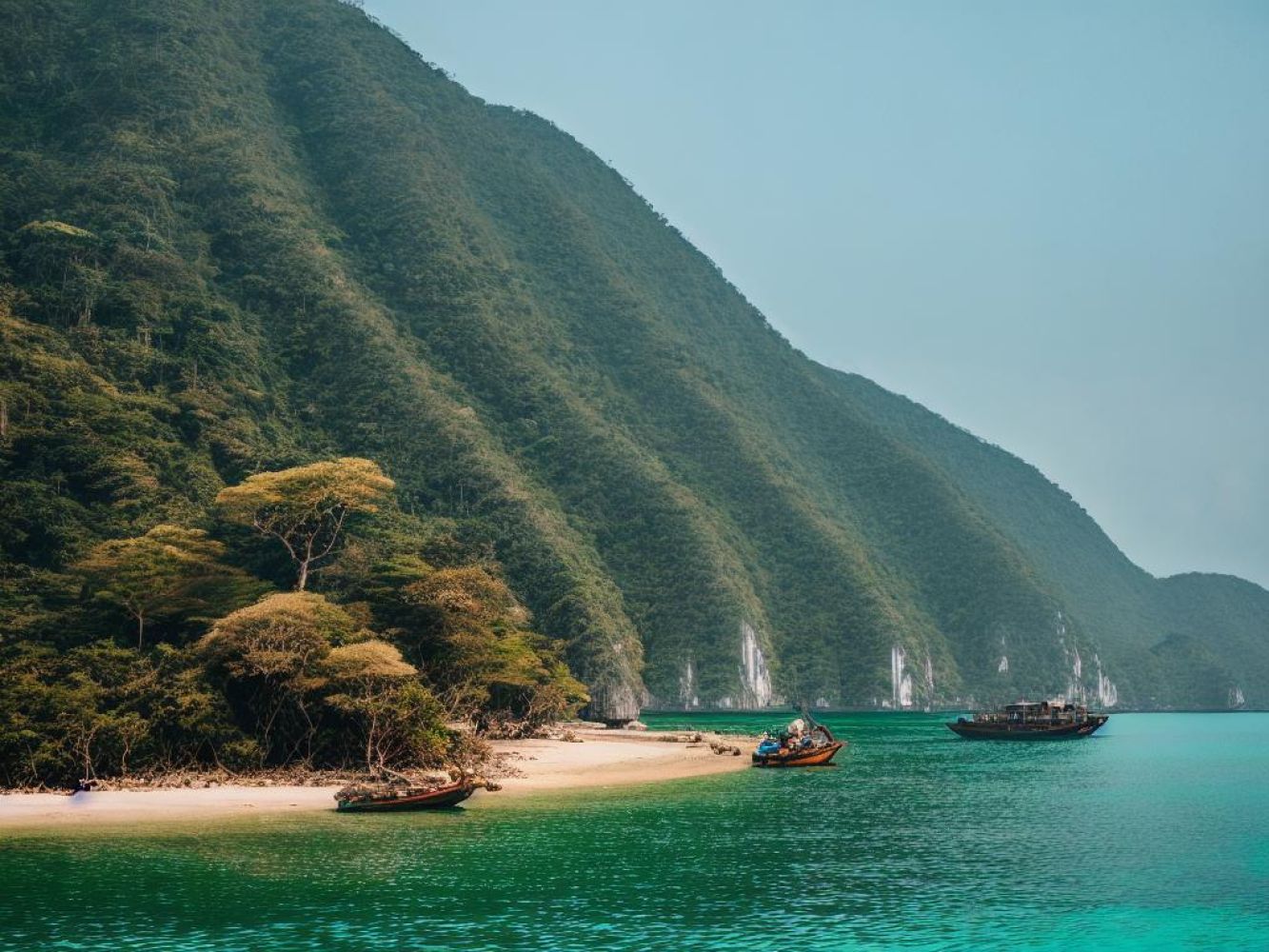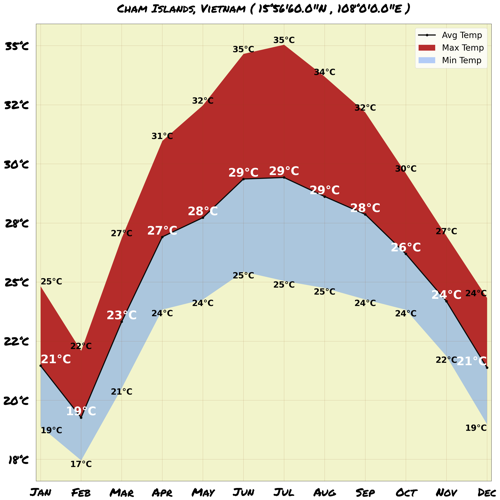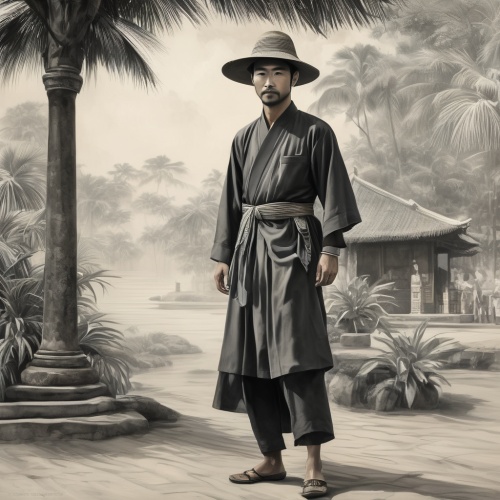Understand
The Cham Islands, part of the UNESCO Biosphere Reserve Cu Lao Cham - Hoi An, are a true paradise in Central Vietnam. This archipelago, located approximately 9 nautical miles offshore and to the east of Cua Dai Beach, is a must-visit destination.
The Cham Islands cover an area of 235 square kilometers, including eight islands and surrounding waters. The largest and only inhabited island is Hon Lao, with a hilltop elevation of 517m. Other islands in the group include Hon Cu, Hon Kho, Hon La, Hon Dai, Hon Lo, and Hon Tai. Each island is unique and offers its own natural wonders to explore.
Unfortunately, the increasing popularity of the Cham Islands has led to some negative impact on the environment. The UNESCO Biosphere Reserve was created to protect the islands, the communities, and the delicate ecosystem. It's important to visit these islands responsibly and minimize any harm.
The administrative island area of the Cham Islands is called Tan Hiep Commune, which has its own commune management since 1978. The capital village, Bai Lang, is home to approximately 2,400 people, while Bai Huong is the second village with around 400 residents. The commune is divided into four hamlets, each showcasing the local life and culture.
Exploring the Cham Islands is like stepping into a tropical paradise. With crystal-clear waters, vibrant coral reefs, and lush green landscapes, these islands offer a unique experience for nature lovers and adventure enthusiasts. Don't miss the chance to visit this breathtaking part of Vietnam.
Get in
The Cham Islands, located at the river inlet to the ocean, are known for their extreme shallow water conditions, with an average depth of only 900 mm. This makes them almost inaccessible during the NE monsoon season from September to December. However, from January to May, they are sometimes accessible, and from June to August, they are almost always accessible. Weather conditions at the Cham Islands can change throughout the day. Mornings are calmer, but after 1 PM, stronger winds and waves can be expected. Be aware of summer time squalls that are frequent in late afternoons. Keep an eye out for dark clouds forming towards Laos, as they may signal the approach of a dangerous squall. It's important to note that the boats operating in Vietnam are not always up to international standards and may not be designed for rough waters. If you want to visit the Cham Islands, you can take the 20-meter long wooden ferry that departs from Hoi An public pier. The ferry carries various cargo and is usually available at around 7:30 AM, weather permitting. As a foreign tourist, you will pay a higher price, but it guarantees you a seat and a life jacket for safety. The old ferry will stop at Bien Phong, the Border Patrol entrance to the river inlet to the ocean. Sometimes, you may be asked to show your passport and valid visa to travel to the Cham Islands. This security measure does not apply to speedboats. The old ferry will take you to the largest village, "Bai Lang," on the largest island, "Hon Lao." The return journey to Hoi An usually departs around 3:00 PM and takes approximately 2 hours. Alternatively, there are daily tours to the Cham Islands operated by some travel companies. These tours depart from Cua Dai beach dock at Bien Phong and offer either a 30-minute speedboat ride or a 1 hour+15-minute wooden boat ride. These tours typically operate from May to August, as their speedboats are not suitable for rough weather conditions.
Map & Climate
Popular Foods
 Phở - Phở is a popular Vietnamese soup consisting of broth, rice noodles, herbs, and meat, typically either beef or chicken. The broth is often made from simmering bones and vegetables, resulting in a rich, savory flavor. Phở is commonly served with side dishes such as lime wedges, bean sprouts, and chili sauces.
Phở - Phở is a popular Vietnamese soup consisting of broth, rice noodles, herbs, and meat, typically either beef or chicken. The broth is often made from simmering bones and vegetables, resulting in a rich, savory flavor. Phở is commonly served with side dishes such as lime wedges, bean sprouts, and chili sauces. Bánh mì - Bánh mì is a Vietnamese sandwich that typically includes a combination of meats, such as pork, ham, and/or chicken, pickled vegetables, and chilies, all served on a crusty baguette. It's a fusion of French and Vietnamese cuisine, reflecting Vietnam's colonial past.
Bánh mì - Bánh mì is a Vietnamese sandwich that typically includes a combination of meats, such as pork, ham, and/or chicken, pickled vegetables, and chilies, all served on a crusty baguette. It's a fusion of French and Vietnamese cuisine, reflecting Vietnam's colonial past. Gà nuòng - Gà nuòng, also known as grilled chicken, is marinated in a mixture of ginger, garlic, fish sauce, sugar, and other seasonings before being cooked over charcoal. The result is a flavorful, tender chicken dish with slightly caramelized edges. It is commonly enjoyed at casual eateries and street food stalls across Vietnam.
Gà nuòng - Gà nuòng, also known as grilled chicken, is marinated in a mixture of ginger, garlic, fish sauce, sugar, and other seasonings before being cooked over charcoal. The result is a flavorful, tender chicken dish with slightly caramelized edges. It is commonly enjoyed at casual eateries and street food stalls across Vietnam.




Comments
NO COMMENTS